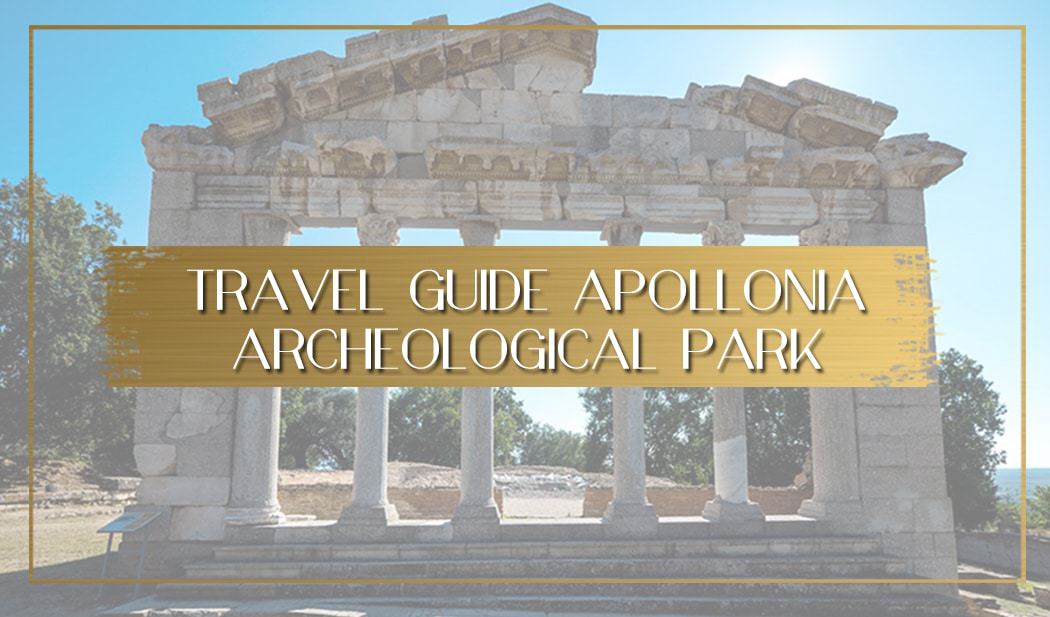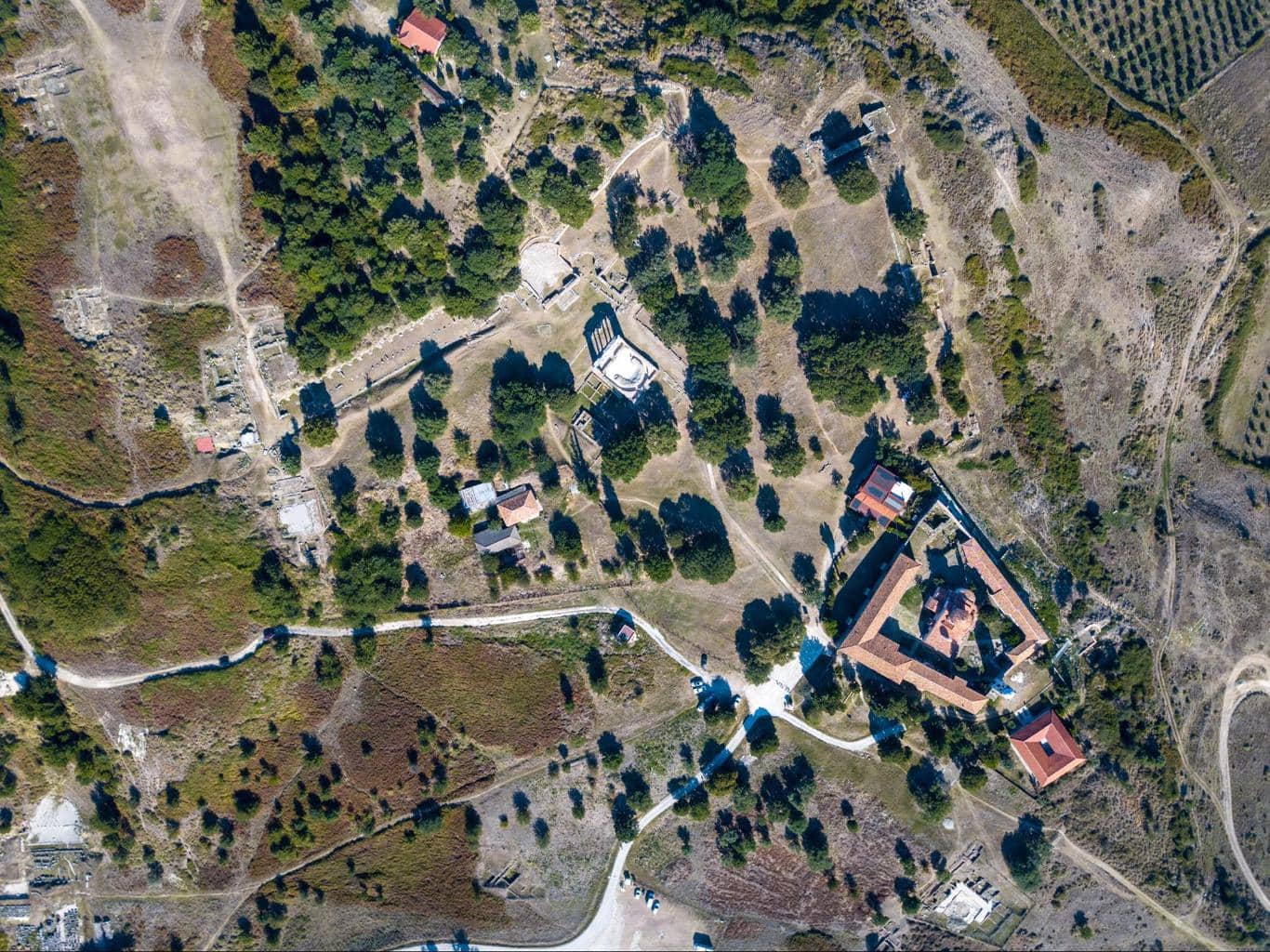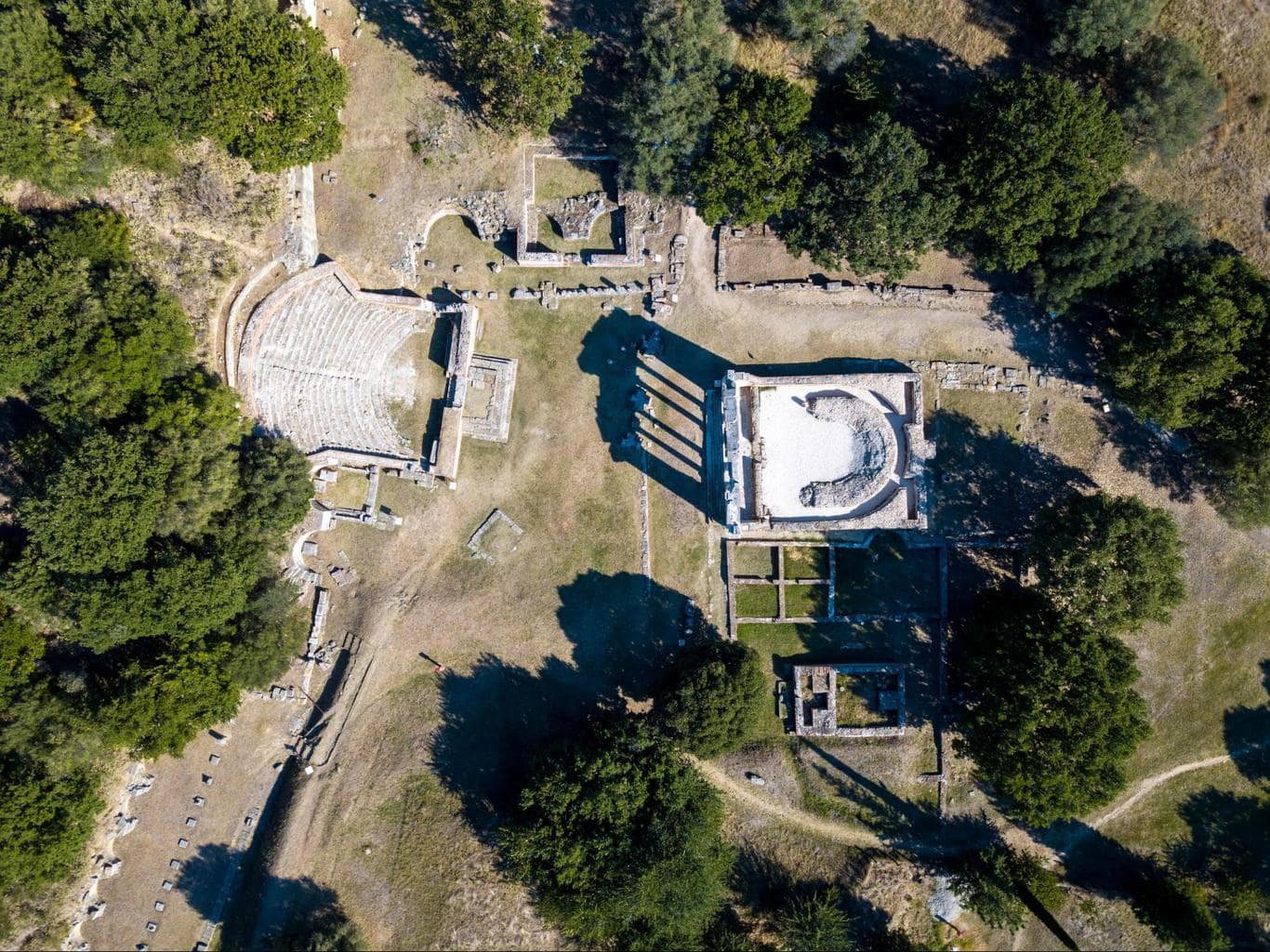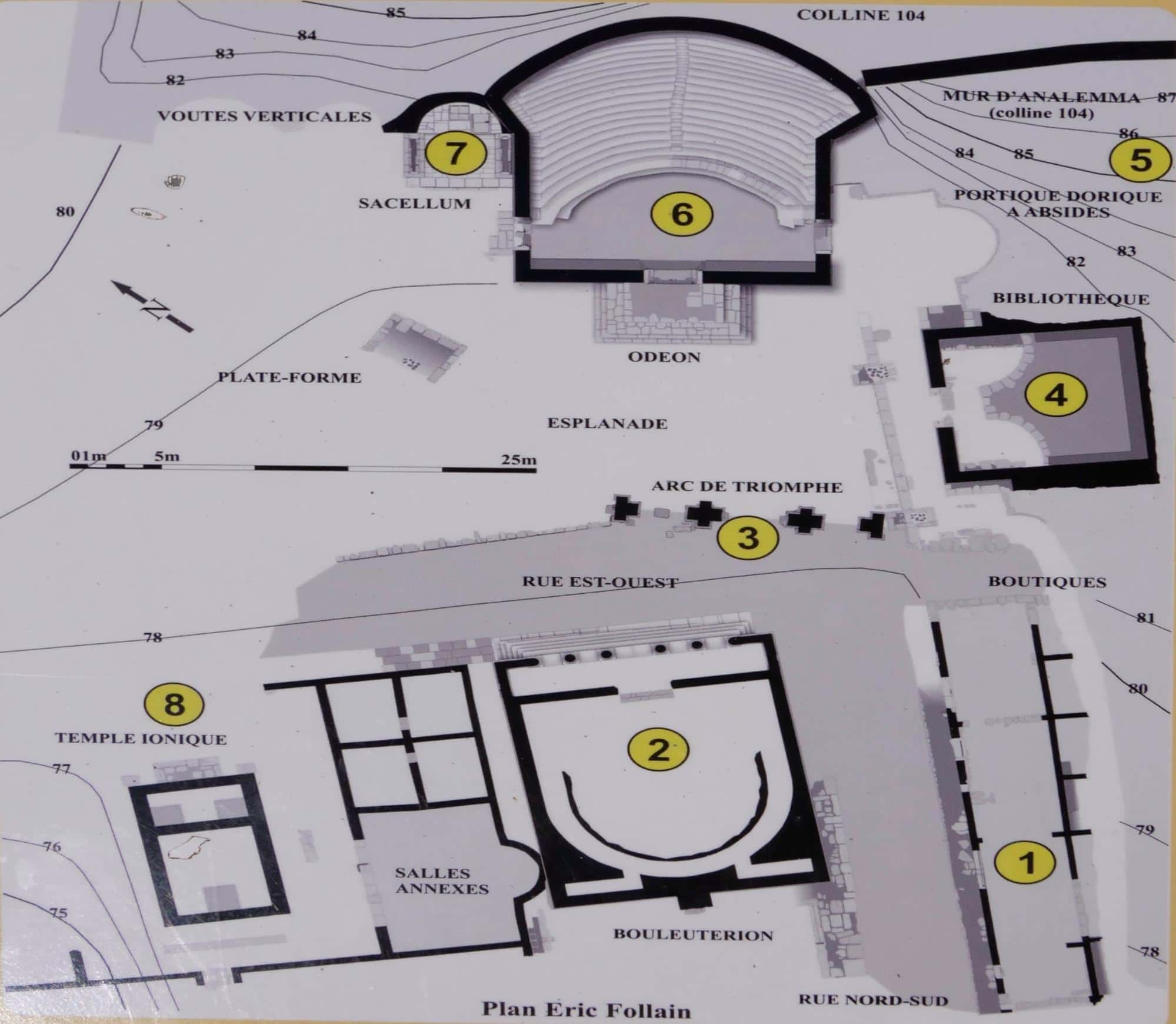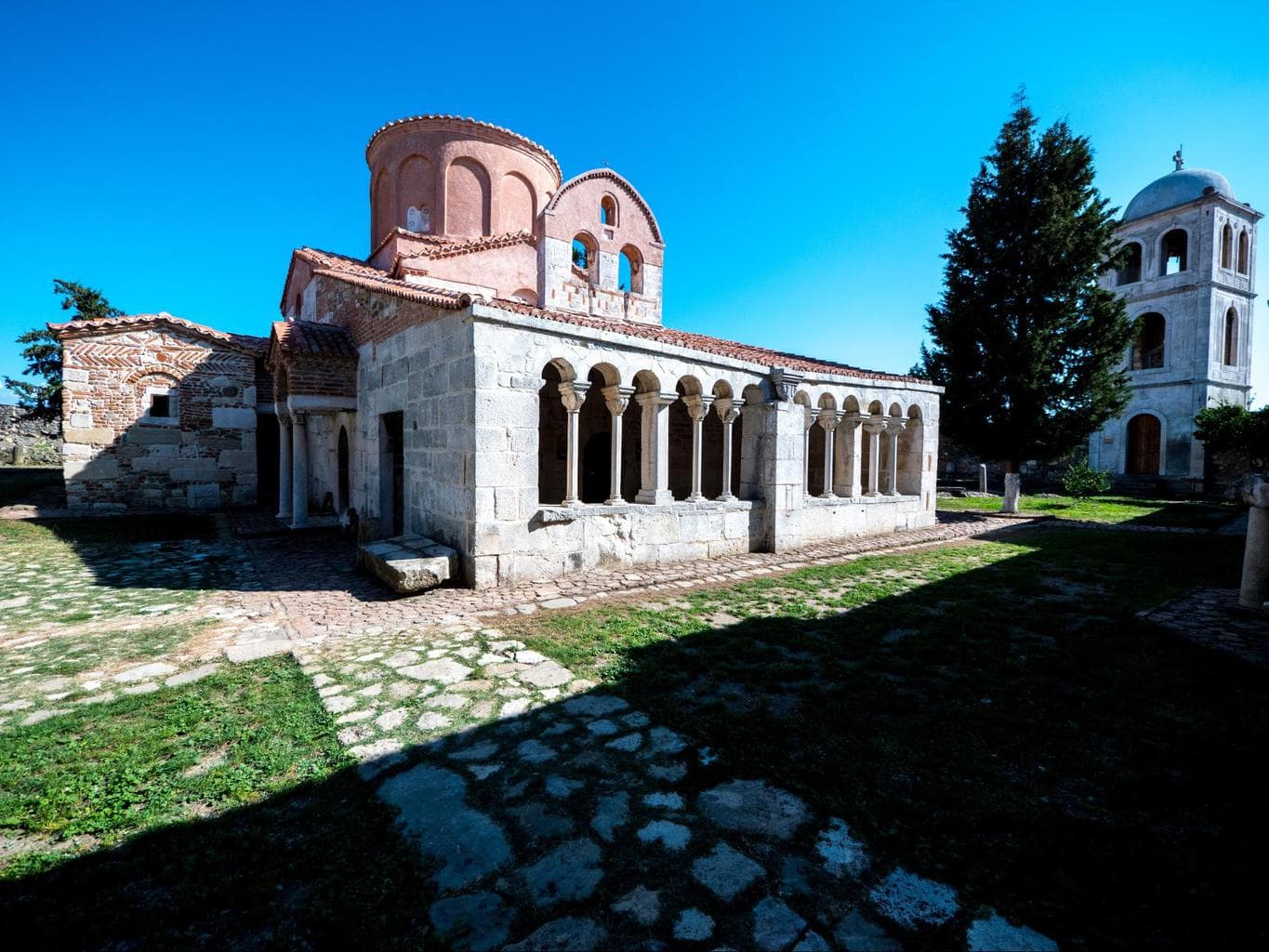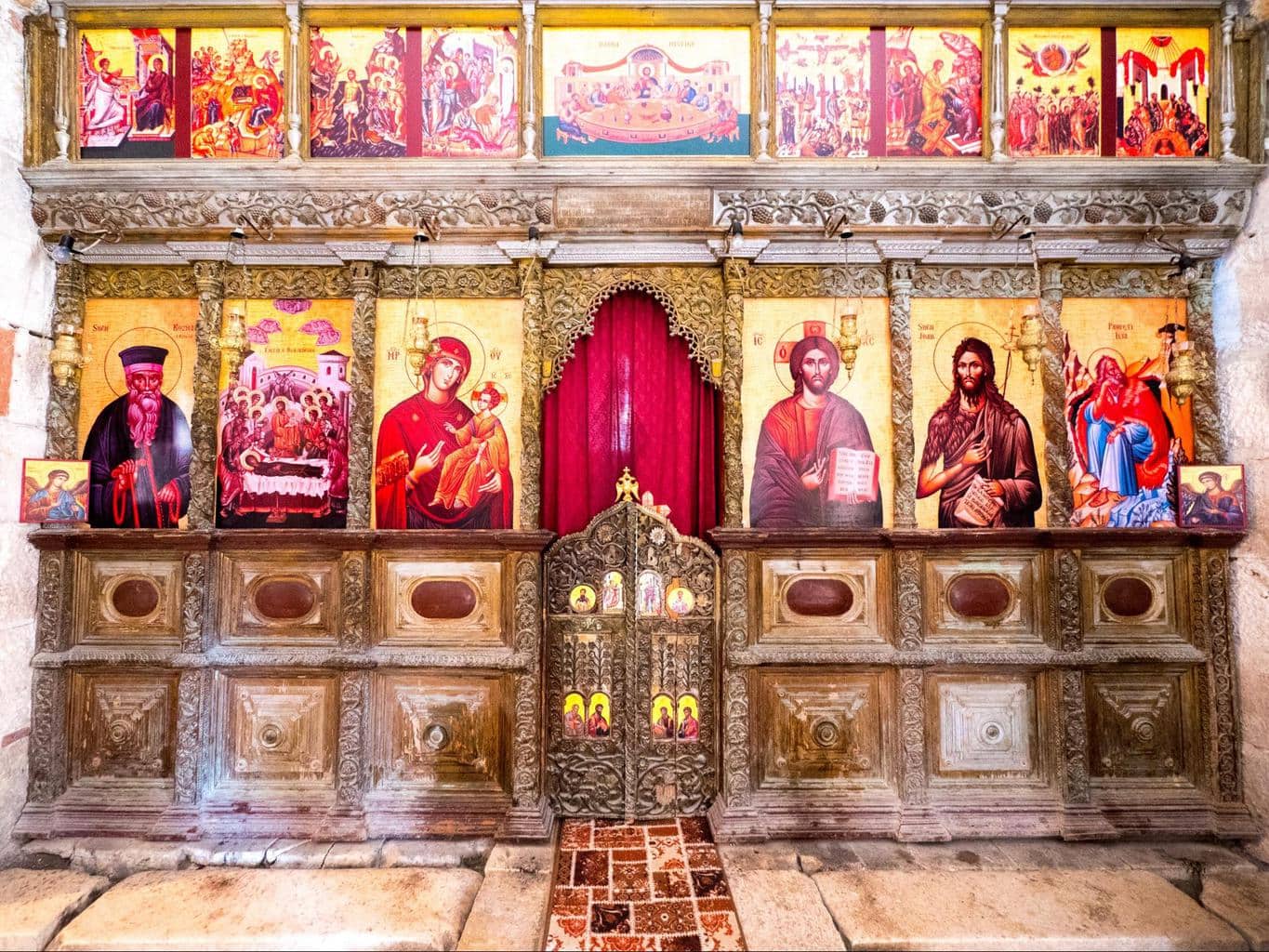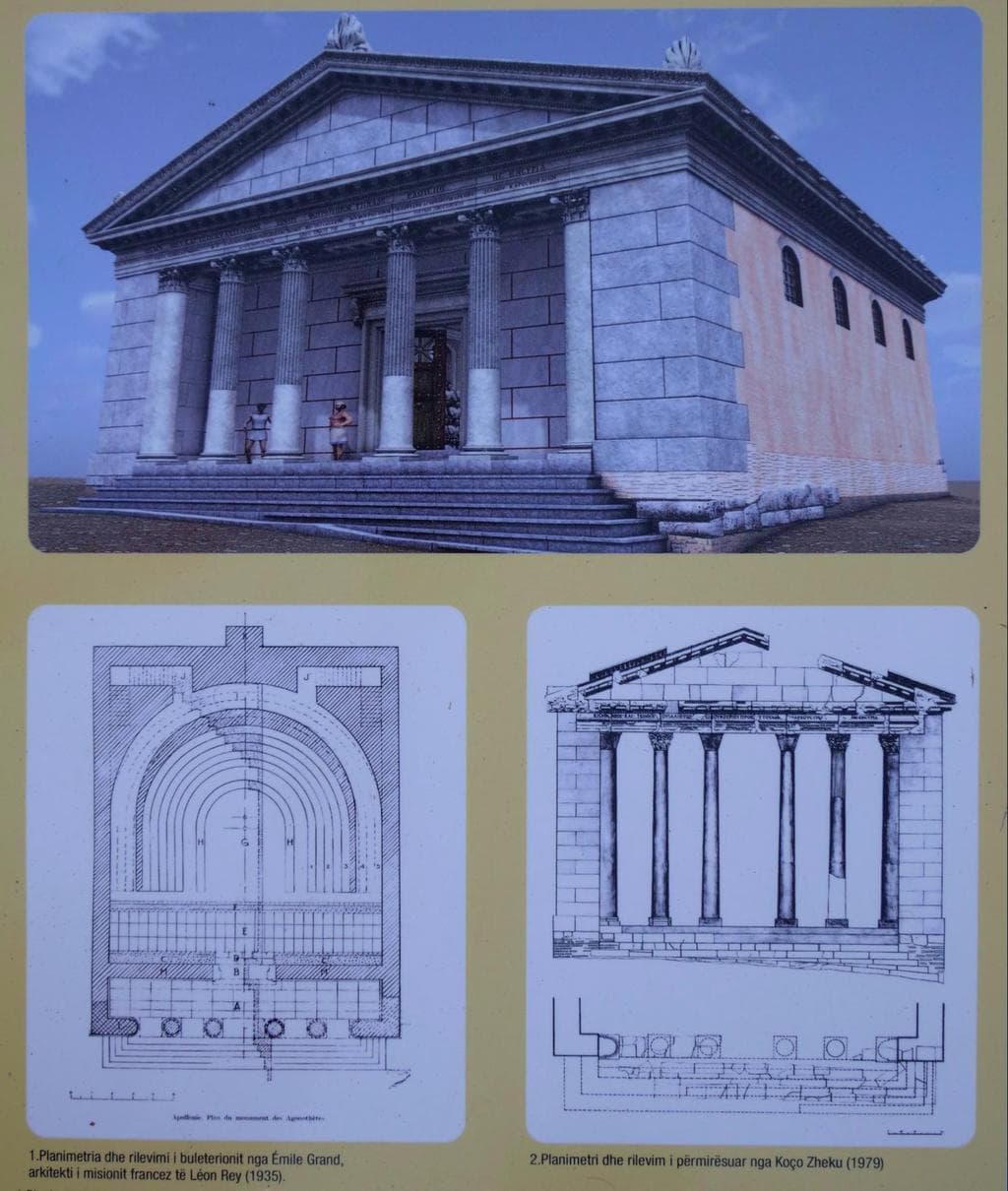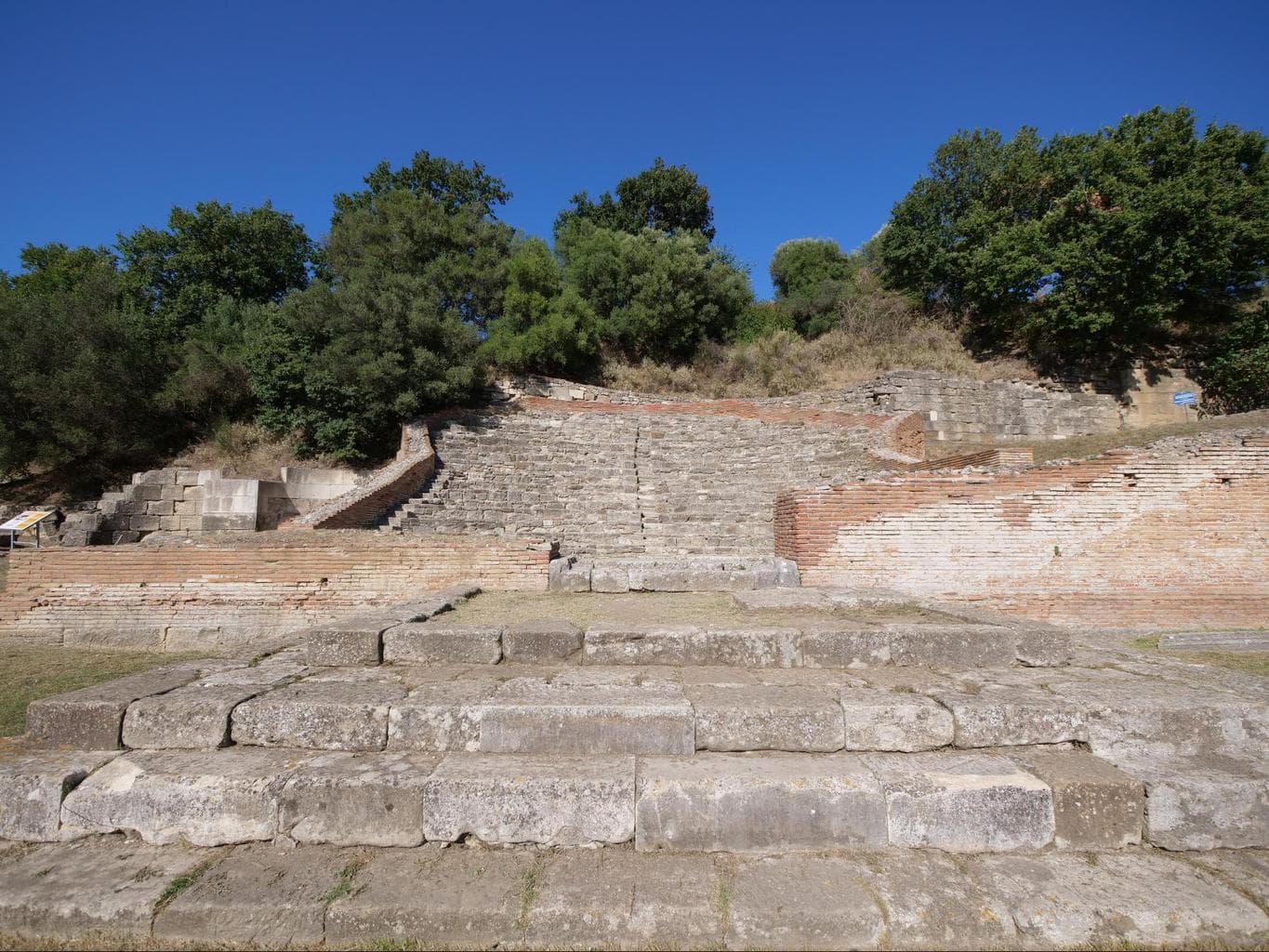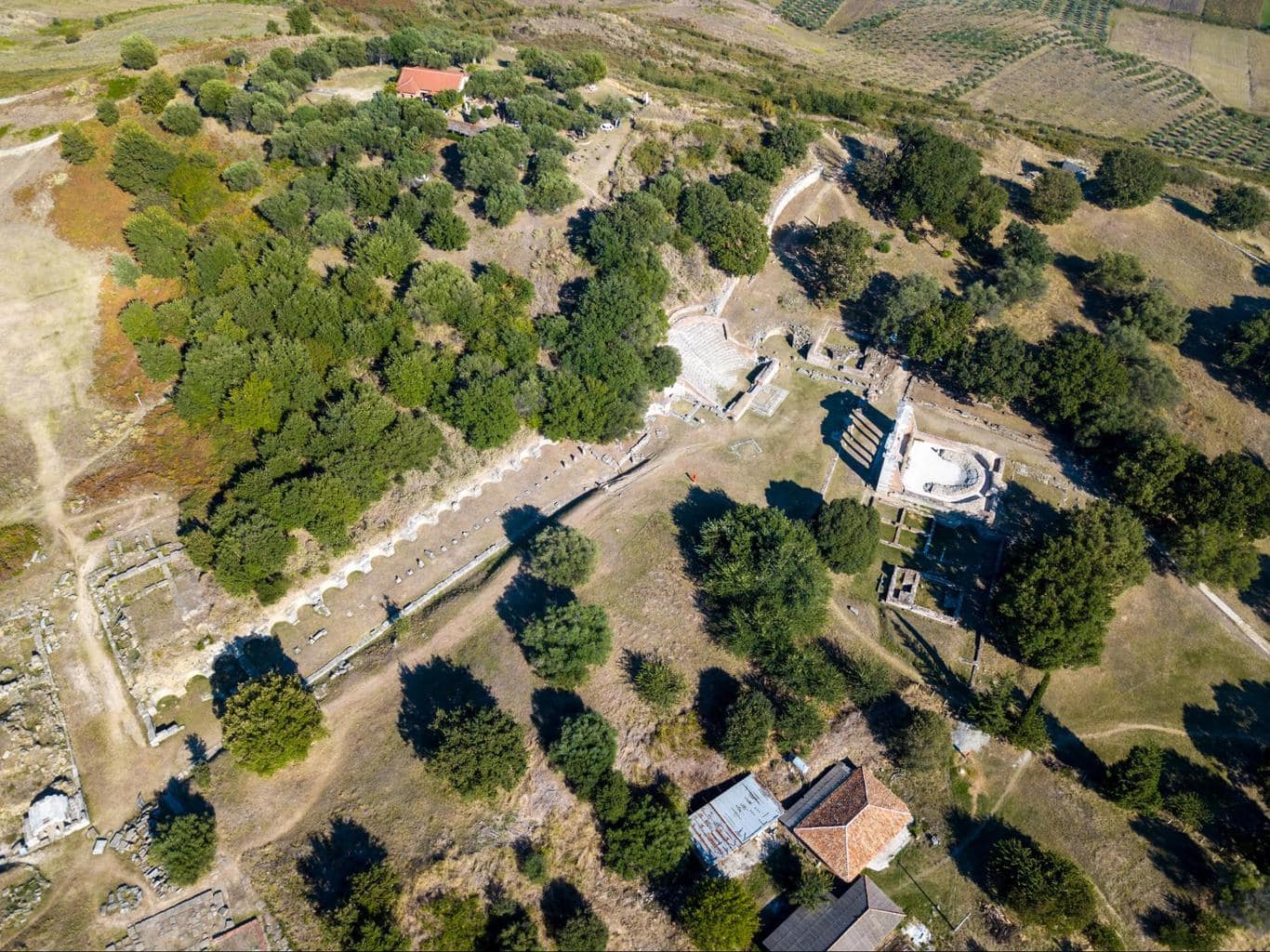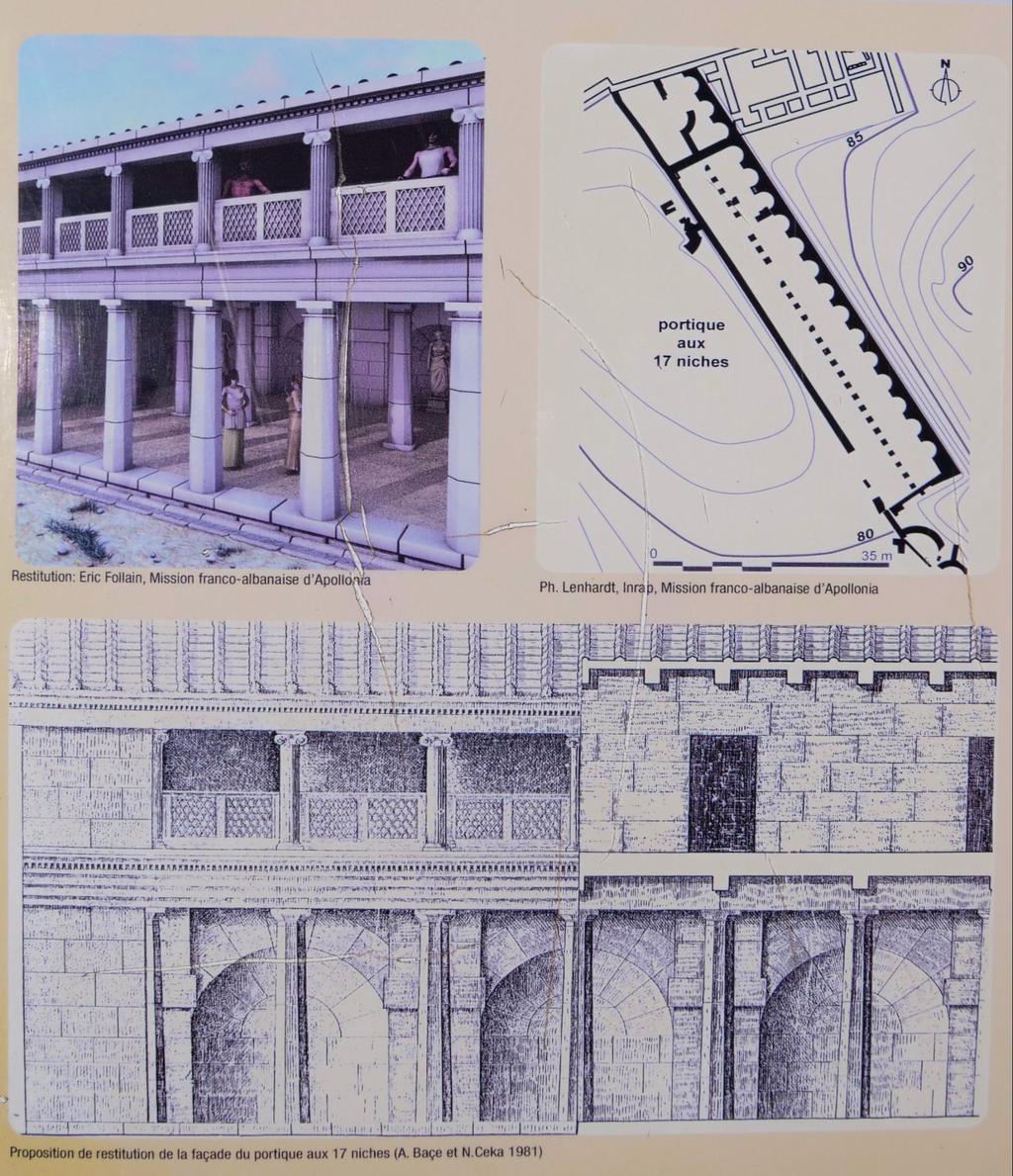Apollonia Archeological Park is one of Albania’s most impressive tourist attractions. It’s definitely one of the top things to do in Albania for history buffs or an Antiquity lovers.
Located about 20min from Durres and about an hour from Tirana, Apollonia was once a Greek city founded in the 7th century BC and was then taken over by the Romans in the 2nd century AD. Its importance started to decline in the 3rd century AD after an earthquake.
Apollonia is a rather common name among Illyrian and Greek cities, all of which are devoted to the God Apollo. Yet an interesting fact about the one in Albania is that it’s most important owing to its size which reached 60,000 inhabitants at its peak.
As an important port city, like Durres, Apollonia was a key point in the Greek Via Egnatia road which connected Thessaloniki with modern day Istanbul. The city was wealthy and prosperous and minted its own coins.
During Roman times, it was also an important education and philosophy center with a large library where many scholars and came to further their knowledge, including Roman Emperor Augustus who spent a year studying there and was in Apollonia when Caesar was killed.
Sadly, Apollonia’s fate was changed when an earthquake in the 3rd century AD caused the river that gave it a strategic advantage to change course and caused the area to become a swamp. After losing its important location, the majority of its inhabitants had to move and the city was abandoned after.
The excavation works started during WWI and continued between the two World Wars till today. However, the majority of the city, which expands over two square kilometers, is still unearthed, and only 5% has been excavated by various groups of archeologists from different countries.
The Roman Monumental Center of Apollonia in particular, where most of the sites listed in this article are located, was excavated by the French archeologist Leon Rey in the 1930s but the current appearance is the result of the works by the Institute of Monuments of Tirana between 1970 and 1980.
Apollonia Museum
Start at the museum, which is housed in a 13th century monastery and holds a lot of what was found during the excavations (the rest is in the museum in Tirana) including statues and mosaics.
St. Mary Church and Monastery in Apollonia
Next to the museum is the well preserved 14th century St. Mary Byzantine church and a cloistered hall with the larger excavated statues on display.
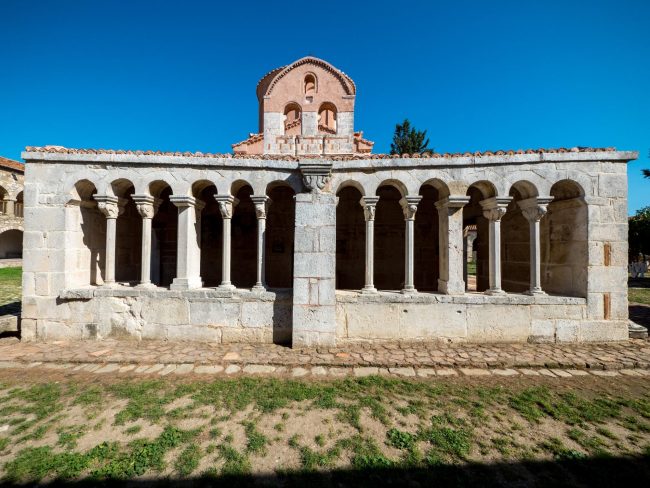
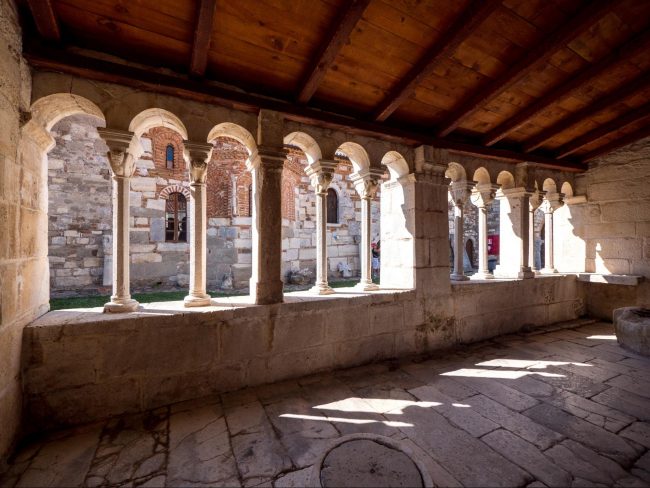
The church and monastery are medieval and were built using the stones that made up the odeon in the central monumental area. You can go inside the church for a brightly colored iconostasis.
Apollonia’s Bouleuterion
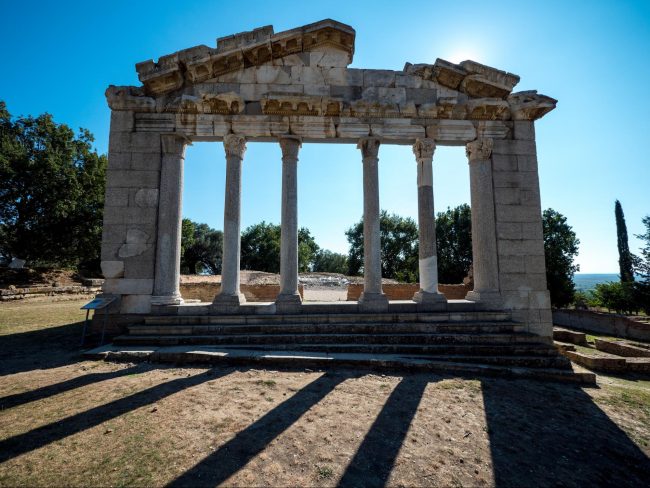
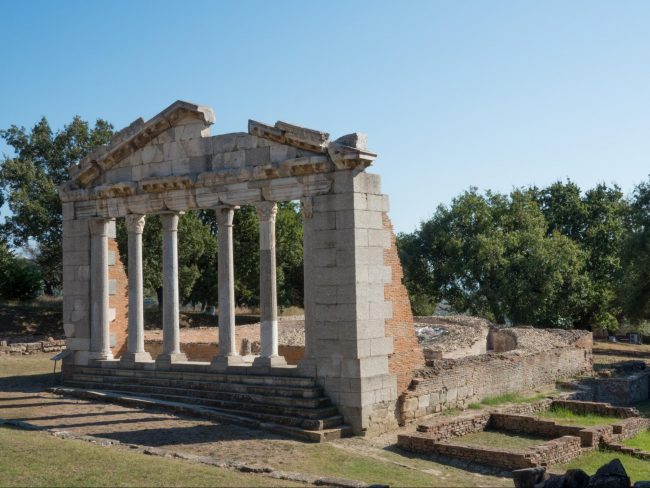
In the middle of the ruins of the Monumental Center is the 2nd century AD Bouleuterion, the city council building, with a portico facade made of six Doric columns and a Corinthian top that still stands. Not much else has survived of the building other than its facade.
This is the most impressive of the constructions, with a temple-like look, it used to be big enough to host 160 people for local authority meetings. You can also see the stairs that led to its entrance and the building is unique in its back wall horseshoe shape.
Because only the facade stands, the archeologists have recreated it in a computer-generated image of what it must have looked like which can be found near the facade in the display exhibits. The facade was rebuilt between 1974 and 1978 from the excavated rocks found by Leon Rey.
Apolonia’s odeon
The odeon is a sort of theatre constructed for performances and which was built in the 2nd century AD between the Greek and Roman times. This transition period meant that it had a unique architectural design and a roof.
As opposed other parts of the Monumental Center, the odeon was excavated in 1978 and reconstructed between 1984 and 1987. It is believed that the odeon was also used for magistral sessions and teachings as Apollonia was an important education center.
Apollonia’s Stoa or Portico
Largest of all the monuments left is the Stoa which dates back to the 3rd century AD and can be seen clearly near the main temple and odeon. There is not much left of the columns, only their bases, and none of the statues but you can make out its shape and length.
One side of this portico was covered, the one to the mountain, with 27 niches all preserved, while the other was open. There were 35 columns although only 27 bases have been found.
The temples and villas of Apollonia
Next to the city council there are also the remains of two temples, but not much is left to make these out so look at the virtual reconstructions that are displayed next to the ruins.
Further away from the main sites you can find a few villas of which only the floor mosaics remain, and which must have had nice views over the plains below.
How to plan a visit to Apollonia
Apollonia is usually quiet but receives a few tourists almost all of whom come by car or on an organized tour. Coming by public transportation would not be possible as the site is in the mountains away from any road.
If you are driving, getting there is easy as the site is on Google Maps and easy to find. You can park below the entrance under the shade of some trees and pay the entrance fee.
There are guided tours everyday but also brochures in English and explanations next to each site which provide a lot of background on each landmark and often times, floorplans and virtual representations of what the structures must have looked like when they were built. More information here.
Move on to more epic destinations using our European Road Trip Guide.
- Check if you need a visa, get help processing it at iVisa.
- Never ever leave without travel insurance. Get affordable coverage from World Nomads or long term insurance from Safety Wing.
- I find all of my flights on KAYAK. Check their Deals section too.
- Search for all your transportation between destinations on the trusted travel booking platform Bookaway.
- I book all my day trips and tours via GetYourGuide, they are the best and their tours are refundable up to 24h in advance.
- Get USD35 off your first booking with Airbnb.
- Compare hotels EVERYWHERE at HotelsCombined and book with Booking.com.
- Compare car rental prices at Rentalcars.com

